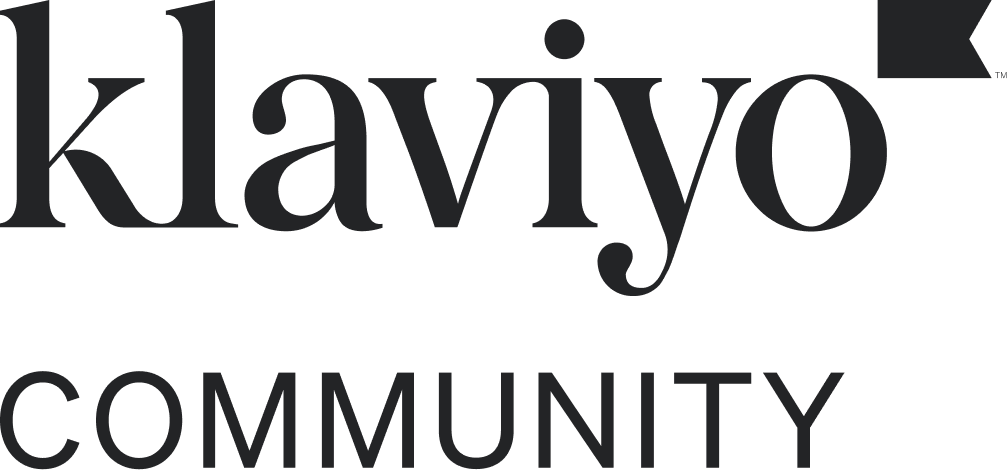📌 NOTE: the following applies only to recipients in the United States who fall under protection of the CAN-SPAM Act.
It’s no secret that transactional emails have the highest engagement rates of any email message type. The reason recipients open transactional emails at such high rates is because they contain important transaction-related info and are time-sensitive. If someone is receiving a transactional email, they have already given money to a brand and are waiting to make sure they receive the correct product, and that it will arrive on time. For the sake of this post, let’s get specific and define what we’re talking about when we say “transactional email”.
A transactional email is defined as an essential, non-marketing digital communication that is triggered in direct response to a transaction-related event. That could be:
-
Someone places an order → order confirmation
-
Warehouse prints label for order → shipping notification
-
Package is delayed in transit → shipping delay notification
-
Package has been delivered → order delivery notification
-
Oversold product + cannot fill order → unexpected order cancellation notice
-
Customer initiates a cancellation → order cancellation confirmation
-
Customer initiates a return → return confirmation
-
Warehouse successfully receives return → return receipt confirmation
-
Refund is initiated → refund confirmation
You get the idea. Customers expect clear communication sent to them when key events happen related to their order. They’ve got money and time invested, so they expect some relevant and timely comms. Transactional messages contain messaging that does not require consent because it is not marketing. So when you choose to send transactional messages through Klaviyo, it's important that we send each and every message, even to those who have unsubscribed from your brand, and have made it explicitly clear that they do not want to hear anything from you beyond essential order-related information. For this critical reason, we require you to submit an email for transactional status verification when you believe a message within your flow should be delivered to everyone, regardless of consent status.
❓ Which is what brings us to the question of the day: should you or should you not include marketing elements like cross-selling or up-selling in transactional emails?
Cross-selling and up-selling are both very obviously marketing strategies, and are considered essential transactional messaging. But as marketers, we see that these transactional messages get incredible engagement, and naturally, we want to capitalize on that opportunity to create stickier customers with higher lifetime values.
What the law says 📃
If you’ve been in email marketing long enough, you’re probably at least vaguely familiar with the CAN-SPAM Act, which gives people the right to have you stop emailing them with promotional messages and imposes some pretty harsh penalties on senders who break the rules. So what are the rules around including marketing—or as CAN-SPAM refers to it, “commercial”—content in transactional messages?
You can include a limited amount of commercial/marketing content in your transactional emails IF and ONLY IF:
- The subject line is clearly transactional. By law, a person must be able to reasonably interpret that the message will probably be transactional based on the subject line. Something like “Order confirmation for order #12345” usually works pretty well. With Klaviyo, it’s easy to merge order data like order number into the subject line.
- The primary purpose of the message is about the transaction. Once again, a person should be able to look at the message and reasonably determine that the primary purpose of the message as a whole is to communicate essential details about a transaction. This is where the 80/20 rule comes in—if more than 20% of the message appears to be promotional or commercial, your message may not actually be considered transactional.
- The transactional information appears first. Logically, if you want something to feel important, you put it up at the top as the first thing a recipient will see. Essential information and data about the transaction must be the first element of the email, and should take up the bulk of the space (roughly 80%) of the page. Many transactional messages don’t even include a header link bar; instead, they focus on the essential transactional information.
- The design and styling of the commercial/promotional element is not wildly distracting and does not pull the focus away from the main content. Avoid using colorful buttons, new fonts, or big and bold design. Putting a short and unobtrusive call-to-action at the end of a transactional email is okay, as long as it is not pulling the reader’s attention away from the critical details.
- The commercial element appears at the very end of the message. If you’re going to include any type of promotional or marketing material in a transactional message, it should be the very last element of the message before the footer.
Why you need to be thoughtful about your approach 💭
If you’re familiar with the basic concepts of deliverability, you already know why this is a slippery slope. If you aren’t super familiar, here is the simple breakdown:
🏁 If people get annoyed by your emails, they will mark them as spam →
🛑 If numerous recipients are reporting your messages as spam, then you are more likely to be immediately filtered into the spam folder for all recipients by inbox providers →
🚫😨😭 If your messages go directly to spam, people do not ever see them (which means they don’t open or click) and your email performance metrics can quickly go down the tube.
This is not a great situation to be in when it comes to recipients not seeing your marketing messages. But what would be an even worse scenario?
People not seeing the critical, essential transactional messages that you’re sending to them about their orders! Transactional messages landing in spam can cause tons of customer frustration, confusion, and make life pretty miserable for your customer service team. This could really end up costing you in the long run.
And this could actually happen if you aren’t thoughtful about how you are including marketing elements in your transactional emails. Don’t forget, emails that have been verified and granted “transactional” status in Klaviyo will be sent to all customers, even those who unsubscribed from marketing content. So if your transactional emails have too much marketing content in them, you risk seriously enraging a lot of customers who have already explicitly opted out of marketing, or even facing hefty penalties should one of these people decide to take legal action.
The Klaviyo transactional message verification process will reject any emails that have too much marketing content in them. However, it is possible to edit transactional emails after you’ve already gotten the approval and the message has been marked as transactional. This is why I am stressing the point that with great power comes great responsibility to do right by your customers!
Appropriate techniques for cross-selling and up-selling 👍
Heavy stuff. I’m not trying to scare you. I am, however, encouraging you to use your very best judgment when it comes to designing a communication plan that keeps the best interest of your customers and their experience front and center. So now, let’s talk about what you can do.
Plenty of brands have successfully and appropriately incorporated elements of up-selling and cross-selling into their transactional messages in a way that doesn’t diminish the transactional intention of the email. The positioning of the commercial element should be personalized and highly relevant to the transaction in the email. Let’s take a look at some examples.
“You may also like” . . .
This is probably the simplest and most classic cross-sell technique for any email, but it works especially well at the bottom of transactional emails because it is pretty unobtrusive. Adding a row of three recommended products that the customer may also be interested in is a great way to try and increase repeat purchase rate over time. Someone who just spent money with you is primed to consider other options since they have already committed to a first purchase. You can choose to use a static row of “Best Sellers”, or insert a dynamic product block that will show customized recommendations for each recipient.
Up-selling an existing subscription
If you offer a “subscribe and save” or subscription option, you’re probably sending out some sort of “Your order is going to ship soon” notification so customers can make changes, pause, or cancel before their next shipment. These emails are the perfect opportunity to up-sell and encourage customers to add additional items onto their subscriptions, or to add one-time add-ons to their next order. This is great for increasing average order value and average customer lifetime value (CLV).
Suggest different products in a cancellation confirmation
Now, this really depends on the product you are selling and it may not work well for all industries. I’ve seen this work really well for consumer packaged goods that are running on a subscription model. If a customer cancels their subscription to a product, then you’re most likely sending them a cancellation confirmation notice. In this notice, you could consider adding a row of recommended products that are not the product they’re canceling and position it as “try one of these instead”.
Bonus! 💥 Create the best experience by building cross-sells and up-sells into the rest of your customer journey.
Don’t want to cross the bridge of adding promotional content into transactional emails? No sweat. Our robust tech partner network offers literally hundreds of solutions for your tech stack that can help you up-sell and cross-sell basically anywhere else in the customer experience.
Cross-sell and up-sell on a branded customized shipment tracking page using a tool like WeSupply Labs.
Conversion optimization and onsite dynamic product recommendations? Check out these tools.




![[Academy] Deliverability Certificate Badge](https://uploads-us-west-2.insided.com/klaviyo-en/attachment/505f2253-cde5-4365-98fd-9d894328b3e0_thumb.png)

